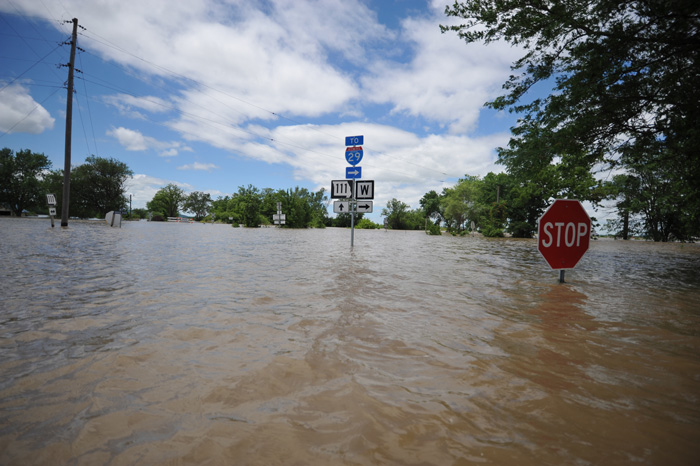Dickinson College Research Examines How Natural Disasters Affect Poverty

Summer student-faculty research looks at the economic wake of nature’s path
by David Blosser '19
By the time Hurricane Michael had finally blown out of North America, it had taken with it more than 30 human lives and left in its path around $8 billion (and counting) in financial losses. But if you’ve been paying attention, you’ve undoubtedly noticed that this wasn’t a rare event.
Dozens of hurricanes have hit the U.S. over the past decade, with Sandy (2012; $65 billion), Maria (2017; $90 billion) and Harvey (2017; $125 billion) taking the ignominious top spots for both financial losses and deaths.
Many say climate change is exacerbating both the strength and prevalence of hurricanes and other natural disasters. And social observers have noted that people with little financial resources to begin with often are affected more adversely, because of geography, and find it harder to recover, because of the financial burdens natural disasters leave in their wakes.
So as the numbers pile up, it might just be the economists who can shine a new light on what natural disasters really mean to people on a basic economic level and add a new spoke to the ever-spinning wheel of the climate change debate.
Summer research
Enter Assistant Professor of Economics Emily Marshall, Assistant Professor of Economics Anthony Underwood and two Dickinson students, who launched the research project “Natural Disasters, Household Debt, and Inequality: County-Level Evidence From the United States.”
Marshall says the project—supported by an R&D Student Faculty Research Endowment Award—was the perfect opportunity to expose student researchers to environmental economics, an increasingly studied field in the face of climate change.
“The level of originality and precision required of me [made] every task more challenging,” says Yanqing "Qing" Zhao ’19 (quantitative economics), president of Dickinson’s Economics Club. “But as I adapted to my role as a co-author of the publication, I became more confident and began contributing more of my original thoughts.”
In addition to organizing the disaster and debt data in the economics department’s statistical software program, the students took the lead on compiling and processing all the banking, demographic and homeownership data to use for their analysis. During the process, students were challenged to hone their coding skills, as they were working with computations and syntax that they had never seen before.
“What’s really cool is that both students are applying to Ph.D. programs in economics, so this research opportunity was extremely valuable to them,” says Marshall, noting that the impact of natural disasters on inequality has been under-researched.
Now that some research is on the books, the team discovered that the relationship between natural disasters and debt is contingent on the severity of the disaster—but not in a way that you might expect.
Weighing the aftermath
For the project, the team used data culled from the Spatial Hazards Events and Losses Database for the United States (SHELDUS), a county-level hazard data set that tracks and compiles natural disasters—rated on a scale of severity—and the losses that follow in terms of life, property, livestock and crops. It contains information on natural occurrences ranging from thunderstorms, hurricanes and wildfires to flash floods and heavy rainfall.
What the researchers discovered was that, perhaps paradoxically, severe disasters actually often result in less debt. According to Marshall, the reason for that could be due, in large part, to the alleviating effect of disaster-assistance money from organizations such as the American Red Cross or insurance payouts for events like total losses. But on the other hand, moderate disasters tend to exacerbate things like credit card debt—when those suffering losses try to spend their way back to normalcy. (Picture a region where insurance policies aren’t in hand and the disaster isn’t catastrophic enough to trigger Red Cross assistance.)
“Many areas that are hit by moderate natural disasters, and have relatively low incomes, are often uninsured areas,” says Marshall. “So these events tend to increase their debt and further exacerbate inequality. It’s a big issue.”
An added dimension
Moving forward, this research project could influence future policy recommendations regarding insurance structure, insurance mandates, etc.
“The odds that we’ll experience a severe natural disaster in our lifetimes are increasing,” says Underwood, an environmental economist. “So this research is important to both policymakers and individuals and adds another dimension to the climate change debate.”
Now it’s time to dig deeper into the literature and begin preparing the manuscript for submission. But while the project is wrapping up, its impact and utility are something that will stick.
“I came into Dickinson searching for ways to make a greater impact,” says Zhao. “And after doing applied economics work on natural disasters, household debt and inequalities, I have finally found a way to make that difference.”
TAKE THE NEXT STEP
Published November 6, 2018